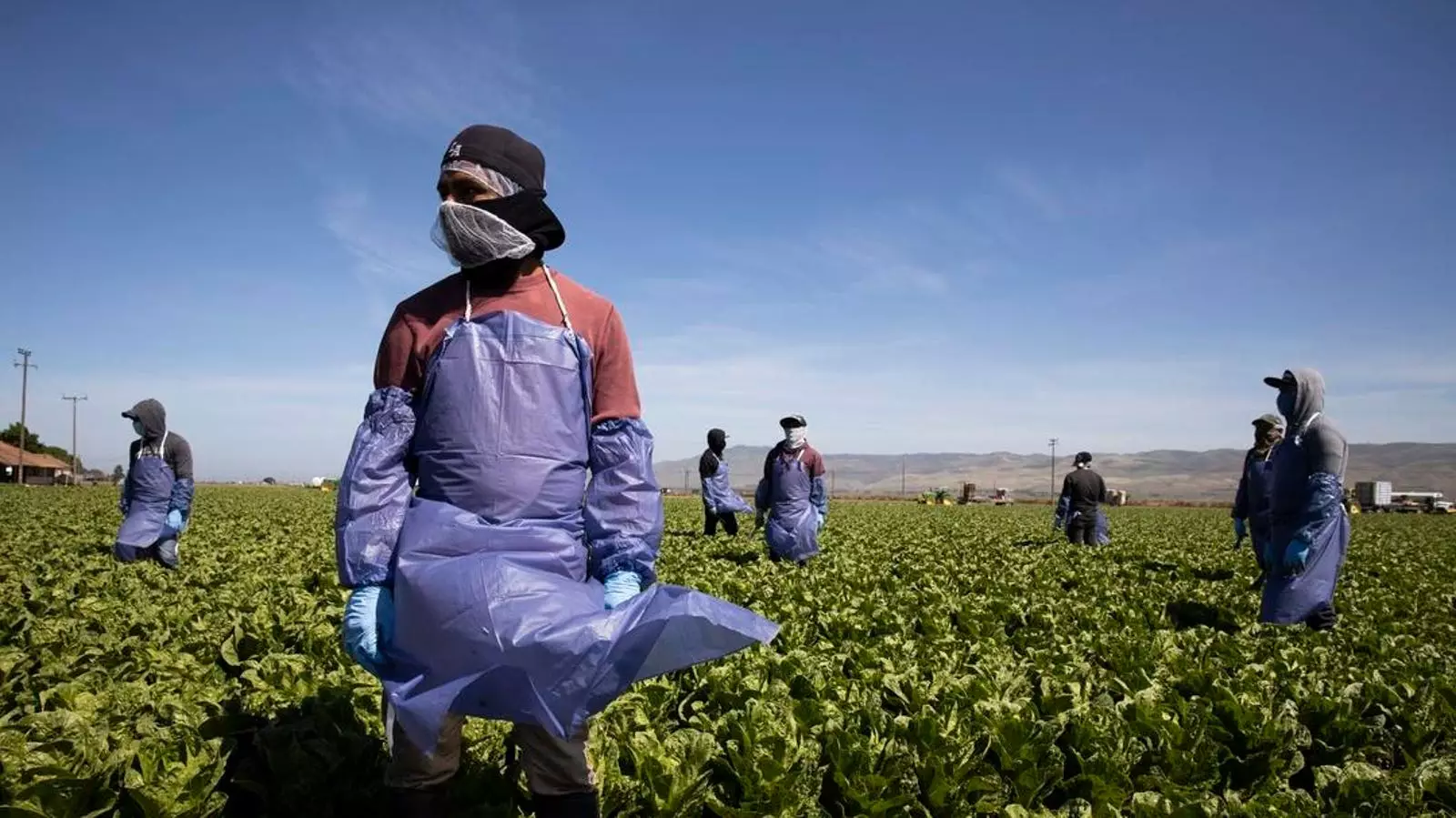A new legal dispute is brewing as a coalition of agricultural and business organizations seeks to challenge a rule issued by the U.S. Department of Labor (DOL) that aims to bolster labor rights for H-2A visa holders. The crux of the controversy lies in the assertion that this rule unlawfully expands the labor rights framework applicable to the agricultural sector. While courts have impeded the rule’s implementation in several states, it has the potential to affect workers and employers in numerous others, igniting a broader debate on immigration policy, labor rights, and regulatory practices.
The H-2A visa program allows U.S. agricultural employers to bring foreign workers into the country temporarily for seasonal labor. This program has been a pivotal lifeline for American farmers who face chronic labor shortages, especially in a competitive agricultural landscape. Data from the State Department reveals a dramatic increase in H-2A visa approvals, particularly for Mexican workers. This surge correlates with a notable decline in unauthorized immigration from Mexico, highlighting the importance of legal immigration channels in addressing labor needs.
Originally initiated as a response to robust complaints about labor shortages, the H-2A program has weathered its share of critiques. While it facilitates legal employment for migrant workers, it simultaneously stirs contention regarding worker rights and employer responsibilities. Many argue that granting more rights to visa holders could create an uncomfortable dynamic in a sector that traditionally operates with limited labor regulations.
The Department of Labor’s Final Rule
On June 28, 2024, the DOL finalized its new regulations regarding the H-2A visa program. The core provisions of this rule extend protections to agricultural workers, mandating that employers refrain from intimidating or discriminating against employees who choose to engage in collective action pertaining to their wages or working conditions. Specifically, it emphasizes the right for workers to participate in “self-organization” activities without fear of retaliation.
According to the DOL, this new framework does not mandate recognition of labor unions or impose collective bargaining obligations on employers. Instead, it aims to broaden existing protections against unfair treatment in the workplace. Critics, however, assert that the DOL is overstepping its authority, arguing that agricultural workers are not covered by the National Labor Relations Act (NLRA) and that the DOL’s invocation of immigration law to extend such rights constitutes a regulatory overreach.
The challenge against the DOL’s rule is spearheaded by a coalition including the International Fresh Produce Association, the American Farm Bureau Federation, and the U.S. Chamber of Commerce. They argue that the new regulations contravene established labor laws and infringe upon employers’ rights to communicate with workers freely. By referencing the Immigration Reform and Control Act of 1986, the plaintiffs maintain that the DOL is attempting to impose labor protections that fall outside its jurisdiction.
In a striking assertion, the plaintiffs argue that the DOL’s expansion of protections to H-2A workers closely mirrors the rights extended under the NLRA—rights that they claim agricultural workers have historically not been entitled to. Furthermore, they emphasize that the rule disregards the constraints placed by Congress on labor relations within agriculture, risking a fundamental shift in the sector’s labor market dynamics and operational practices.
Concerns About Legal and Economic Implications
The implications of this legal battle extend beyond immediate labor relations. According to the plaintiffs, the DOL’s rule could have detrimental economic impacts, making it increasingly challenging for agricultural employers to recruit and retain workers. Jon Baselice, a representative from the U.S. Chamber of Commerce, characterized the rule as “onerous,” suggesting that it might impede farmers’ ability to address workforce demands effectively.
Moreover, the plaintiffs argue that failure to halt the rule could lead to “irreparable harms” to agricultural workers and businesses alike. They contend that this regulatory change could fundamentally alter labor market conditions, which, in turn, might jeopardize the nation’s food supply chain by limiting the ability of farmers to operate efficiently.
Looking Ahead: Potential Outcomes and Future Considerations
While the legal challenge proceeds, the DOL remains adamant about the necessity of its rule, highlighting the need for enhanced enforcement mechanisms in the evolving landscape of foreign labor recruitment. The future of this rule hangs in the balance, as courts weigh the merits of the arguments presented by plaintiffs against the DOL’s regulatory intentions.
As stakeholders on both sides navigate this contentious issue, it is crucial to recognize the multifaceted implications of the H-2A rule, not only for the agricultural sector but also for broader discussions surrounding labor rights and immigration policy. This legal conflict serves as a critical juncture at which the interests of workers, employers, and government regulators collide, shaping the future of labor relations in American agriculture.

